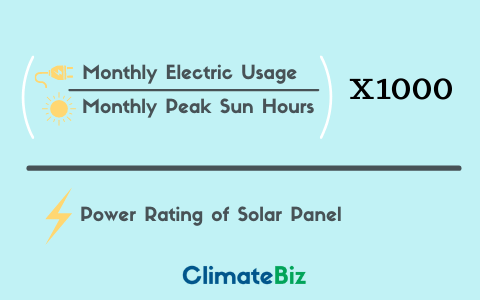Average Peak Sun Hours (South Africa)
| Province | Average Daily Peak Sun Hours (kWh/m2) |
|---|---|
| Eastern Cape | 4.3 - 5.6 |
| Free State | 5.3 - 5.7 |
| Gauteng | 5.3 - 5.5 |
| Kwazulu-Natal | 4.3 - 5.3 |
| Limpopo | 4.7 - 5.3 |
| Mpumalanga | 4.7 - 5.5 |
| Northern Cape | 5.7 - 6.3 |
| North West | 5.5 - 6.1 |
| Western Cape | 4.7 - 6.0 |
(Use our solar calculator to assist you in sizing your home’s solar system.)
South Africa Peak Sun Hours Breakdown
What Are Peak Sun Hours?
A peak sun hour equates to 1 hour in which the sun’s solar irradiance (sunlight) produces an average of 1000W (energy) per square meter (roughly 10.5 feet). In other words: 1 peak sun hour = 1000 W/m² of sunlight per hour.
We feel it’s also important to note the difference between DNI, DFI and GHI:
- GHI (Global Horizontal Irradiation) – This is the sum of both diffuse and direct components reaching the same surface.
- DNI (Direct Normal Irradiation) – This is the part of solar irradiance that directly reaches a surface.
- DIF (Diffuse Horizontal Irradiation) – This is the part of solar irradiance that is scattered by the atmosphere.
Many people make the mistake of utilizing DNI data to size their solar system, when in actual fact they should be using GHI. For a complete glossary of all the solar terms we use, be sure to check out NREL.
How Many Hours of Sunlight Does South Africa Get?
The entire sub-Saharan Africa, with no exception for South Africa, has great potential for solar power implementation. South Africa sees on average between 1543 – 2264 kWh/m2 a year. Simplified, this translates to 4.1 – 6.3 peak sun hours a day, with the Northern Cape experiencing the higher end of that spectrum and Kwazulu-Natal seeing the lower end – having at least 4 hours of peak sunlight is best for solar panels.
A senior mechanical and mechatronic researcher from Stellenbosch University, Professor Detlev Kröger, claims that South Africa is one of the best places in the entire world to develop solar energy.
Additionally, according to Gov.za, South Africa is considered a relatively dry country, with annual rainfall averaging only 464mm in comparison to the world average of 806mm. Less rain means more chance for peak sun hours – resulting in more power generated from solar PV.
How To Use Our peak Sun Hours Data?
When using this peak sun hour data to size your solar system, we recommend using the lower numeral for your province. Although not as significant as other countries, peak sun hours do vary somewhat depending on where you actually live in the province. For example, if you stay in the Western Cape, rather use 4.7 in your solar sizing formula as opposed to 6.0. This will safeguard you and give your solar system a little more room for any unforeseen weather conditions.
In order to know what size solar system your home will need, you can use the following formula: Monthly electric usage ÷ by monthly peak sun hours, X 1000. If you want to know how many solar panels you’ll need, simply divide that amount by the power rating of your desired solar panel.
Here is a written example: You live in Cape Town, Western Cape and your monthly electricity consumption is 450kWh. Your area’s monthly peak sun hours are 145 (4.7 x 31 days) and you want to use a to make up your entire solar system.
(450kWh ÷ 145) = 3.1 x 1000 = 3100 watts. You will need a 3.1kW solar system to offset your monthly energy consumption. 3100 watts ÷ 400 watts = 8 panels needed.

